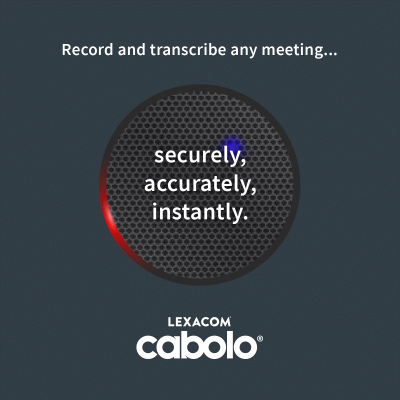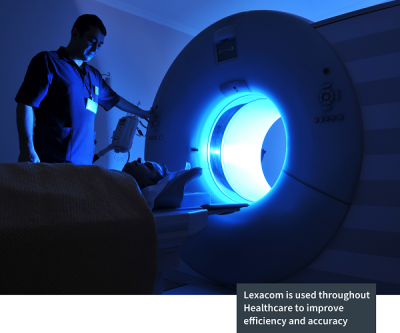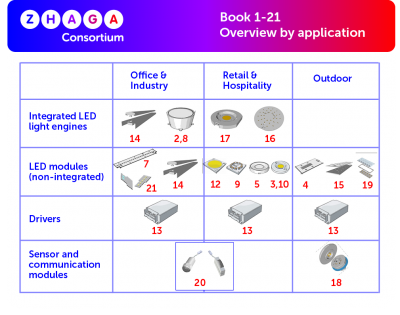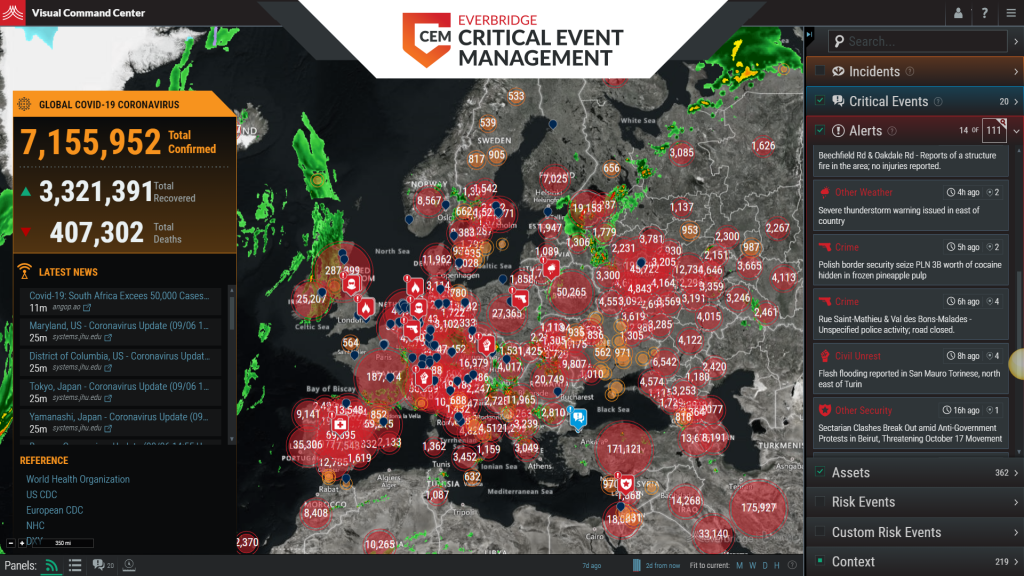|
|
Konica Minolta Business Solutions (UK) Ltd today announced that it is helping Walsall Council to deliver enhanced ICT, as part of the council’s PROUD programme, which is transforming the way public services are delivered. The council has deployed a cloud-hosted PlanetPress solution as part of its centralised communications strategy, hosted and managed by Konica Minolta.
“We took the decision to move to PlanetPress in order to automate more processes and cut down on manual, repetitive print tasks,” explains Elizabeth Pearson, IT Project Manager, Walsall Council. The new cloud-based solution was purchased through Lot 1 of the Crescent Print Consortium (CPC) Multifunctional Devices and Associated Print Services and Supplies framework. It replaces the council’s legacy document management application that was used to support high-volume print services such as council tax invoices, election polling cards and other customer correspondence.
“By digitally enabling our work processes, we are ensuring council services keep pace with the changing needs of residents, communities and local businesses,” continues Elizabeth. “The cloud is an intrinsic component of this transformation strategy, it means we can develop and deploy modern digital services faster and more cost effectively.”
PlanetPress expertly manages a complex system 24x7x365, ensuring council tax and other important document services continue uninterrupted. Benefiting from the fixed-fee cloud hosted service, there are no up-front capital costs for hardware, maintenance, or support, and it is hosted and maintained in a highly resilient and fully backed-up UK-based data centre. No council staff intervention is required, they simply connect to the PlanetPress workflow automation through a VPN line.
Elizabeth adds: “Konica Minolta is playing a vital role in helping Walsall Council modernise and streamline critical work processes that enable sustainable business delivery. By making use of a managed cloud service and simplifying day-to-day work, we can increase efficiency, which will improve customer service and drive down costs.”
Jonathan Smith, Head of Public Sector Sales at Konica Minolta states: “The PlanetPress project for Walsall Council is the perfect example of the power of cloud technology in supporting public sector organisations with their digital transformation. Our Professional Print solution provides a highly agile, practical and powerful, yet flexible and cost-effective way of providing improved services, exactly where and when they are needed.”
About Konica Minolta Business Solutions (UK) Ltd
Konica Minolta’s innovations help businesses to shape the future, today, changing the way people conduct business and use technology to work smarter, faster and better. As a leading Smart Data and Digital IT Services company, we meet the changing needs of customers with our Digital Print, IoT, Artificial Intelligence and Augmented Reality solutions.
As a provider of comprehensive IT services, Konica Minolta also delivers consultancy and services to optimise business processes with intelligent workflow automation, and implements solutions in the field of IT infrastructure and IT security as well as cloud environments.
Konica Minolta’s solutions are proven to improve quality, reduce cost, eradicate risk, increase accuracy and streamline business processes. Recognising there are no two businesses the same, we pride ourselves on our customer partnerships and tailor our solutions to our customer needs, giving them the competitive edge they need to remain at the forefront of their markets.
Combining our market leading, award winning and easy to integrate technological platforms, with our strategic partnerships, business solutions and services portfolio, Konica Minolta is continually improving quality, reducing cost, eradicating risk, increasing accuracy and streamlining business processes for our customers. Our strategy has our customers at its core. With strong and mutually beneficial customer partnerships, our aim is to achieve mutual sustainable growth through technological innovation – giving shape to our customers’ ideas. We bring flexible solutions that not only meet our customer expectations, but exceed them, time after time.
Part of the global Konica Minolta Group, Konica Minolta Business Solutions (UK) Ltd is headquartered in Basildon, Essex and operates out of 10 offices across the UK, employing over 750 people.
Terms and product names may be trademarks or registered trademarks of their respective holders and are hereby acknowledged.
Web: www.konicaminolta.co.uk
This year, Women’s Equality Day celebrated its hundredth milestone, celebrating the date of which women in the US gained the right to vote for the very first time. Since 1920, the world has dramatically changed for women in every sector, from making strides in their education and in their work, to winning more nobel prizes and becoming CEOs of large corporations. But it doesn’t stop there. We spoke to eight industry leaders on their thoughts about the day and why women’s equality is crucial for the future of technology.
100 years is just the beginning
“Even though 100 years have passed since the 19th Amendment was signed into law, there are many areas in which women are still fighting for equality,” argues Sofia Kaufman, CPO at Zerto. “While topics like equal pay and the lack of women in male-dominated industries still need to be addressed, I want to encourage women across the world to use this year’s Women’s Equality Day as a reminder of their worth. Women achieve amazing things every day, and we need to be celebrated in our success as much as our male counterparts are. It’s no longer time to be humble; it’s time to speak up, move up, and be proud of what we achieve.”
Hugh Scantlebury, Co-Founder and CEO at Aqilla, highlights how women have also passed the centennial milestone in accountancy too:
“Not only has it been over 100 years since women were passed the vote, it’s also now passed 100 years since women were first permitted into the Institute of Chartered Accountants in England and Wales (ICAEW). Although this is encouraging, and it’s meant that over the past 50 years or so the amount of women that have a job in the finance or STEM sectors is gradually increasing, there is still, sadly, a notable gender gap within STEM.
“As technology develops to increasingly include automation, job descriptions will also likely begin to change. It will mean that users will be able to focus less of their time on crushing numbers and creating reports, and utilise their time to solve business challenges. This, I believe, will be the catalyst for an increase in the amount of women working in the industry we’ve been waiting for.”
Diversity issues don’t just stop with gender. In fact, Dalibor Siroky, CEO and Co-Founder at Plutora, upholds that, “It is important that every organisation or team be made up of the best possible selection of people to achieve success. The way to do that is to bring together people of different backgrounds, perspectives and genders. By combining diverse voices, you create a stronger team and encourage an environment of acceptance and equality.
“With diversity being front and centre and a positive force in nearly every aspect of our lives, it’s more important than ever to ensure that women’s voices are elevated and being heard. Isn’t that what Women’s Equality Day is about in the first place: commemorating the passage of the 19th amendment, which granted women the right to vote? With that barrier legally removed, we need to be aware of more subtle and cultural obstacles like unconscious bias and lack of diversity. It’s no secret that the number of women in tech are lower than we’d like to see, and we need to find ways to change that by integrating the voices of those in our industry equally. If we can do that, we all benefit.”
 “Recent global circumstances have put the spotlight on working mothers” The pandemic revealed more inequalities
“In this new reality of pandemic uncertainty, gender imbalances have been exacerbated – a Boston Consulting Group report found that the recent increase in remote working has had a major impact on women, who have spent on average 15 hours more per week on domestic work during the pandemic,” highlights Liz Cook, People Director at Six Degrees.
She continues: “Women’s Equality Day highlights the importance of supporting women and men alike through agile working structures that level the playing field and empower people to be the very best at what they do, no matter what their circumstances. As the People Director of a technology company, I am passionate about working every day to deliver these agile working structures that promote gender-balance and drive a better working world.”
Kleopatra Kivrakidou, Channel Marketing Manager EMEA at Ergotron, agrees: “Recent global circumstances have put the spotlight on working mothers, with many organisations implementing flexible work structures to help them maintain a work-life balance during this difficult period. This includes enabling them to continue to work from home, if their personal circumstances don’t allow a return to the office, and providing the right technology and equipment to support both productive working and wellbeing. Working environments that build their success on respecting diversity, giving equal opportunities for development to all, and who trust their workforce for who they are, become, by definition, the ones where you find more women.”
Lead by example
“This year, Women’s Equality Day is an opportunity to remind ourselves that we need to get more women in tech,” emphasises Marilou van Doorn, COO at Leaseweb Global. “Just because an organisation currently doesn’t have an equal ratio of men to women shouldn’t be a reason not to apply for a role, in fact, it should be the opposite. When I first joined the tech industry, I was the only woman. After a while, my CEO confessed that he had noticed a positive change in the team, the atmosphere and the overall way of working. My advice is to apply – don’t feel intimidated, be the cultural change the organisation needs.
“An organisation’s leadership team plays a significant role in future talent wanting to grow and develop themselves in tech. We as a generation need to see more female role models come forward and show both the current and next generation that women can and will succeed in tech. It’s not just a man’s game. Women can also be the next CTO, COO or CEO.”
Agata Nowakowska, Area Vice President EMEA at Skillsoft, supports this and believes gender equality affects the whole organisation – it’s not just an issue for the female employees within the business:
“Women bring a different dynamic, different thinking and different strategies – so why not have equal representation of genders when it comes to the boardroom? Despite the number of women in leadership positions on the increase, many women across organisations – from the board to roles in IT – are still victims of the gender pay gap. We’re now in 2020, women should be equally paid and for this to be addressed, more organisations need to be transparent about their salary bandings and who is being paid what.
“For women to be truly equal, we need to teach about gender equality within schools. Both boys and girls need to learn to regard themselves as equal and they are both capable of taking up any role, whether that’s in STEM or leadership. Educating children at a young age is the only way to remove unconscious bias that affects us later on in our professional working life.”
Crendal Kear, VP of Global Sales Operations at Exabeam, concludes with some advice for future women leaders in technology:
”‘Be curious. Stay curious.’ More than adopting a growth mindset, indulging your curiosity develops a comfort in asking questions, seeking counsel and getting to the root of the question at hand. These two skills are invaluable to growing your career, serving equally when striving for the next phase of your career or creating the next groundbreaking innovation.
“‘Choose your leader wisely.’ No one rises to the top alone, and it’s important to have strong advocates. A great challenge for women in tech is a lack of community and professional support. Choose a leader who values you, will mentor you, will empower your professional development and will challenge you. Look for a leader from whom you can learn and represent your values. Working for a leader who took the time to invest in me professionally and advocate for me —and coming to fully understand the impact and rarity of such a situation—has been invaluable to my career advancement.”
The Queen has been pleased to approve the following appointments:
- Luke Hall MP to be a Minister of State at the Ministry of Housing, Communities and Local Government (previously a Parliamentary Under Secretary of State in the Ministry).
- Kelly Tolhurst MP to be a Parliamentary Under Secretary of State at the Ministry of Housing, Communities and Local Government (previously a Parliamentary Under Secretary of State at the Department for Transport).
- Robert Courts MP to be a Parliamentary Under Secretary of State at the Department for Transport.
This follows the resignation from Government of Simon Clarke MP.
 Housing Secretary Robert Jenrick today unveiled a new £12 million boost for affordable homes, in a bid to make it easier for people to get on the housing ladder. The programme represents the highest single funding commitment to affordable housing in a decade. Housing Secretary Robert Jenrick today unveiled a new £12 million boost for affordable homes, in a bid to make it easier for people to get on the housing ladder. The programme represents the highest single funding commitment to affordable housing in a decade.
Commenting on the measures, Peter Hogg, UK Cities Director at Arcadis, told GPSJ:
“The Secretary of State’s announcement today on the Affordable Homes Fund is a clear commitment from the Government to prioritise housing delivery. Not only does it make clear the Government is serious about the levelling up agenda but, at the same time, it hasn’t forgotten the unique housing challenges in London, with £4.5m alone earmarked for the city. It shows that the Government is sticking to the Conservative totem of a home-owning democracy with strong emphasis on accessible ownership, inclusive design and less emphasis in the announcement on other tenures. It also talks of private/public sector collaboration to deliver the number of homes targeted in the timescale proposed, which is very encouraging news.
“Linked to recent announcements on planning reform, it shows that the Government really does plan to deliver on the Prime Minister’s “Build, build, build” pledge. This is pragmatic and logical but, as with many other aspects of the announcement, the detail of what this means and – more importantly – how it will work is yet to be made clear. This will be no small task and the Government and the industry must work closely together if the aspiration is to be delivered.”
By Sascha Giese, Head Geek™, SolarWinds
 Sascha Giese, Head Geek™, SolarWinds As the second half of the year gets well underway, and lockdown restrictions generally continue to ease, one of the main topics of concern is a “second wave” of COVID-19 potentially hitting the U.K. in the coming weeks or months. With some scientists predicting “a second wave is almost inevitable”, the public sector needs to ensure it’s ready for any eventuality. In terms of technology, while it has thus far enabled many employees to work remotely, more can be done to improve IT systems if a widespread lockdown is reintroduced.
What Tech Challenges Are on the Horizon?
The main difficulty is if the country as a whole tries to return to normal too soon. For many people, working from home has not been easy, or even possible. While many others are happy working from home, those individuals who haven’t been able to do so will no doubt be keen to return to their offices. But if this isn’t managed carefully across all organisations, the likelihood of a potential second wave becomes a worryingly high possibility. Add to this the increased allowance for more social activities to recommence, and the risks become even higher.
In general, the challenges for public sector technology, if a second wave occurs, isn’t much different than what has already been implemented. If further local or national lockdowns are enforced, the office-based employees needing to work from home already have the measures in place—such as VPN—to do this securely. And the technology supporting those on the healthcare frontline will still be up and running to help patients recover. Most or all organisations now have the processes, means, and experience to ensure moving back to remote working is doable, and should be a smoother transition than it was the first time around.
However, if organisations are perhaps too enthusiastic about returning to offices, and IT solutions put in place to enable remote working are reversed and the resources used elsewhere, we’re back at square one. So what can organisations do in the next few months to prepare their IT systems for a potential second wave?
Where Should IT Investments Focus?
One of the biggest impacts the pandemic has had on public sector organisations—particularly in healthcare—this year has been the increase in cyberattacks. The World Health Organization (WHO) has observed a fivefold increase in cyberattacks since the start of the pandemic, suggesting cybercriminals have been taking advantage of the focus being less on security and more on addressing the health risks around the world. While the technology for remote working is now in place, attention over the next few months should be on ramping up cybersecurity measures across the board. Not only will this help protect organisations in the day to day, it’ll also ensure, should a second wave hit, there’s less risk of a cyberattack bringing down vital IT services.
Vulnerability management
One of the first steps organisations should take is implementing a vulnerability management lifecycle. The aim of this is to highlight any system weaknesses potentially allowing a hacker to infiltrate the network. This lifecycle is comprised of five stages:
- Identify any operating system weaknesses in network devices and systems, and determine how critical these are
- Protect these systems and applications by increasing security measures
- Detect new vulnerabilities by introducing firmware against common vulnerabilities and exposures (CVE)
- Respond quickly to any new threats, particularly while existing vulnerabilities are being fixed
- Verify threats have been eliminated and keep up-to-date reports on all activities
IT tool consolidation
Once these processes are in place, organisations should aim to consolidate their IT management tools where possible to increase efficiency. For applications to run effectively, they rely on multiple dependencies across the IT stack. Failure or poor performance from any of these can impact the experience delivered by the application, including its security. To combat this, a layered approach is required along with automation to ensure assets and data are protected and policies are enforced.
IT consolidation is beneficial because it can help organisations to: automate monitoring to react faster to obstacles; see logs or configuration changes within the context of the item having the issue; and reduce functional overlaps between different silos having their own tools. Doing so can prove to be the cheaper option as more cost-effective solutions can be found to cover multiple needs, rather than paying for several different tools across the organisation.
Automation is particularly important to bolster cybersecurity efforts. By integrating it, organisations can improve the reliability of their critical security functions. Some examples of tools designed to support these efforts include:
- Patch management – Security patches can be implemented as soon as they’re available without IT managers having to integrate them manually several times
- Threat detection and response – Cyberthreats can be identified and responded to quickly to prevent a widespread impact
- Access rights management – Having visibility into who has access to any part of the network means unusual changes can be noticed quicker
- Configuration management – Alerts for any changes to configurations of networks, servers, applications, and databases helps flag any security threats
As autumn approaches and the potential for a second wave of COVID-19 increases, organisations across the public sector would benefit from investing in IT solutions designed to keep systems up and running during the tougher winter months. Not only for the healthcare sector left to cope with an influx of patients, but also for the entirety of the public sector, which ultimately is the backbone of our society.
Following an initial proof of concept phase, Diegesis Limited, an independent business technology and IT systems integration company, has been awarded a managed services contract by the Office for National Statistics (ONS) under the Digital Outcomes and Specialists 4 framework. Under the two-year agreement, Diegesis will support and maintain ONS’s existing Ingres/Actian-X systems written in Applications-By-Forms (ABF) and OpenROAD while maintaining business as usual (BAU) during the organisation’s critical period of IT transition. The programme requires Diegesis to provide a team of experienced, skilled staff requiring government Security Clearance to support a number of systems that collect and process data for a variety of surveys conducted by the ONS. 
Diegesis will carry out a comprehensive range of activities including essential support and maintenance of operational systems, responding to service desk requests and providing updates to existing systems to help meet strategic and legislative changes. The Diegesis team and its progress will be monitored and measured against ONS-defined Key Performance Indicators (KPIs).
Nick Denning, Chief Executive Officer of Diegesis Limited commented, “We were chosen for our experience of Actian and our commitment to meeting the high levels of quality and good governance required by ONS. Our strong sense of accountability, openness and willingness to share knowledge closely matches ONS’s requirement for responsible teamwork. This is a hugely exciting project for Diegesis that showcases our capabilities and skills in this technology and we look forward to working with ONS to deliver a successful IT transition and management of systems with minimal risk and to meeting our commitments to improve quality, efficiency and to reduce operational costs.”
Diegesis staff have worked on Ingres projects over the past 30 years. They have established a solid reputation as specialists in relational database technology, all aspects of integration and in data analytics particularly in the government sector including Ingres/Actian-X IBM DB2, MariaDB and SQL Server. Today, the company applies its knowledge and expertise to remove the operational business support risks to enterprises using the Ingres database and applications written in these tools. Diegesis also helps organisations refactor and service enable this reliable and trusted code and then develop replacement web front ends to invoke these services. Diegesis works closely with customers to deliver a robust, responsive and sustainable business as usual (BAU) framework from day one, at reduced cost. Diegesis can also integrate with an organisation’s existing consulting team to maximise resources and results. For more information visit diegesis.co.uk/
Wellspace announce 12 month partnership to provide digital wellbeing services to Guys and St Thomas Charity
Wellspace will be providing digital services for 12 months to Guy’s and St Thomas Charity as part of their staff health and wellbeing programme.
 Guys and St Thomas Charity is an independent urban health foundation. They work with Guy’s and St Thomas’ NHS Foundation Trust and others to improve health in the London boroughs of Lambeth and Southwark, and beyond. Guys and St Thomas Charity is an independent urban health foundation. They work with Guy’s and St Thomas’ NHS Foundation Trust and others to improve health in the London boroughs of Lambeth and Southwark, and beyond.
The Charity focuses on tackling complex health issues that are prevalent locally but also relevant to other urban areas across the UK and internationally.
“As a charity dedicated to improving people’s health, Guy’s and St Thomas’ Charity believes in a proactive approach to supporting the health and wellbeing of our own team. This is in recognition of both the benefit for individuals’ health and the organisation through enhanced motivation and productivity.
As part of our corporate response to Covid-19, we wanted to strengthen our wellbeing programme, particularly around mental health. The Wellspace platform offered what we were looking for in terms of providing a range of tools and resources for individuals which connects into our Employee Assistance Programme. Given the significant impact of the pandemic on our lives and ways of working, it also provides a way for us to monitor, at an organisational level, how everyone is doing. This provides insights that will help us adjust and evolve our programme and ways of working in response to the changing external context.”
Catherine Cullen, Director of Communications and Engagement, Guy’s and St Thomas’ Charity
It is a fact that happy, safe and healthy employees are better engaged, more productive and have fewer absences. This helps grow the bottom line, retain the brightest sparks, and reward staff with the best gift of all; health.
The Wellspace corporate wellness solution works with Guys and St Thomas Charity’ existing policies and activities to bring their best team to work.
Wellspace is a fully comprehensive wellbeing provider and is on a mission to improve mental and physical health and wellbeing by using cutting edge intelligent technologies, real time reporting, data based clinical workshops and seminars and a clear evidence of success and ROI.
“At Wellspace we are thrilled and excited to be working with Guys and St Thomas Charity. The Wellspace solution is well positioned to support the staff with the overall health and wellbeing.”
Jake Adams, Co-Founder and COO Wellspace
The Wellspace Digital Wellbeing Package includes:
- iOS and Android Wellspace smartphone application
- Health & Wellbeing blogs, tips, articles, exercises, challenges

- Company / Sub Account challenges
- Mental Health & Sleep daily digital diary
- Direct chat access to health and technical support
- EAP awareness and signposting
- Local services and resources signposting
- Red Flag alert system for duty of care
- Content management tool
- Online portal dashboard
- Real time reporting
- Health insights and trends
- Push notification tools
- Dedicated account manager
- Technical support
- Regular review sessions and health data insights
- Engagement points, leaderboard and prizes
- Comprehensive roadmap of feature enhancements
We look forward to a long and successful partnership.
For further information please visit: yourwellspace.com/
TWO THIRDS of the public think that vital public services, such as social care, are put at risk when people who can pay their council tax do not, according to a new YouGov survey.
Already hundreds of millions go unpaid every year and over 80% of the public think that this would continue or get worse if local councils didn’t use bailiffs to recover unpaid debts. Unsurprisingly, twice as many adults back the use of enforcement agents to recover Council Tax debts than oppose civil enforcement.
It is vital for local authorities to collect debts that were incurred before the coronavirus lockdown to fill the funding gaps in their budgets. Between March and June, councils incurred £4.8bn of extra costs and income losses. Despite extra central Government funding, local authorities have warned the budget shortfall in England and Wales could top £7.4bn. From Monday 24 August, authorities will be able to use enforcement agents again to recoup outstanding debts when their own efforts to collect money owed have been exhausted. Enforcement agents returning to work will be collecting debts incurred before coronavirus which have been suspended for five months.
 Social care at risk Enforcement agents will not enter homes to take control of goods after visits resume, save for exceptional circumstances and where deemed safe for agents and customers. This policy will be regularly reviewed in line with government and public health guidance. Where agents encounter vulnerable people, additional support will be provided by welfare teams and referral to council support services.
The YouGov survey found that 65% said non-payment puts services, like social care, at risk. Fears are particularly acute among over 65s, 75% of whom thought non-payment puts services at risk, and among Labour voters (69%). More than half of those polled, 56%, said councils should use bailiffs to collect money from people who can pay but won’t. This was more than twice the numbers who said councils should not use bailiffs, at 28%.
Support for enforcement action is highest amongst Conservative voters, 67%, and is above 50% in every region outside London. Almost half of those surveyed, 42%, said that a failure to use bailiffs would lead to fewer people paying their council tax and 39% said non-payment rates would stay the same. Only 5% said it would lead to improved compliance.
The poll was commissioned by CIVEA, the association that represents over 95% of all enforcement agents. Its members collect annually more than £500m of unpaid tax and fines, including £273m in unpaid council tax – enough to pay the starting salaries of over 13,000 police officers.
The survey also found that widespread support among the public for enforcement action for non-payment of court-imposed fines, with 64% of people saying bailiffs should be used. Some 66% of those polled said they supported the current practice of recouping the costs of collecting the debt from the person who owed the outstanding debt.
There are also concerns authorities will face an increase in council tax evasion this year, and 71% of people believe some taxpayers will use the current health crisis to avoid paying their council tax, even though they can meet the payments. Only 10% of people polled did not think this would happen.
Russell Hamblin-Boone, CIVEA Chief Executive, said, “The overwhelming majority of people pay their council tax on time because they recognise non-payment is unfair and puts vital public services at risk. Councils face a deepening financial crisis because of increased costs and lost revenue during lockdown so it is important that civil enforcement work can resume to recover much needed funding for front-line services.
“Enforcement action is always a last resort by councils when other collection measures have failed and, even then, in half of all cases, an affordable payment plan is set up through e-mails or phone calls. CIVEA’s post-lock down support plan will enable civil enforcement to resume safely, ensuring that public health advice is adhered to and the most vulnerable are protected.”
The rapid deployment of healthcare technology has been one of the most commented features of the NHS’ response to the coronavirus pandemic. Yet a significant minority of patients cannot benefit from new, digital services; and risk being overlooked in the rush to go ‘digital first’ in a post-Covid reset. So what can be done to get digital inclusion onto the digital health agenda?
As the novel coronavirus arrived in the UK, the health system moved fast to adopt some kinds of healthcare technology. Trusts implemented remote working solutions and virtual clinics, while primary care shifted almost overnight to phone and video consultations.
As the NHS prepares to ‘reset’ for the winter and another round of reform, most of the focus in the health tech community has been on how it can retain and build on these initiatives. However, a significant minority of patients have not been able to access new, digital services, and there is a danger their needs will be overlooked in the rush to develop ‘digital first’ approaches on the other side of the pandemic.
At its July meeting, Highland Marketing’s advisory board took a look at this issue, with presentations from Anne Cooper, a nurse-leader and technology evangelist, who lives with Type 1 Diabetes, and Roz Davies, the managing director of mHabitat, a co-design digital innovation and inclusion agency hosted by the NHS with a mission to ensure everyone benefits from digitally-enabled health and care.
The tech revolution in diabetes care
Type 1 Diabetes is an auto-immune condition that means the pancreas can produce little or no insulin, the hormone that regulates the storage and use of glucose and fat. This means people living with Type 1 Diabetes – and there are 400,000 of them in the UK – must regularly measure their blood glucose level and take insulin to keep it within a healthy range.
Anne Cooper showed the advisory board some of the technology that she has been given to do this since she was diagnosed with Type 1 in 1979. Back then, testing meant taking a urine sample, mixing it with water, and comparing the results with a colour chart, while her treatment kit included “a syringe, which I had to boil, with re-usable needles, that went blunt, and a bottle of insulin to draw up.”
 Anne Cooper A big step forward was getting an insulin pump small enough to sit in a bra to deliver short-acting insulin through the skin 24-hours per day. While testing improved with the development of testing strips and then the FreeStyle Libre, a sensor that sits on the arm and measures sugar levels in the fluid under the skin.
“For me, the real difference with the Libre was the data it generated,” Anne told the board. Instead of talking about blood glucose levels – always shown as perfect on older product packaging – “we can talk about ‘time in range’ and that is a massive step forward.”
In fact, Anne has just started using another device, called Bubble, to take readings from the FreeStyle Libre, display them on a smartphone app, and send hypo or hyper alerts. Anne showed the board readings from “a roller-coaster day” in which she had struggled to keep her blood glucose levels within range.
While it had been “a difficult day,” she said it showed how “giving data to patients to manage their condition can be quite significant.” However, “and there is a however,” she acknowledged that it isn’t for everyone. The NHS will fund the FreeStyle Libre, but only if patients meet certain criteria and subject to local discretion. Additions like the Bubble must be paid for.
A significant amount of medical, scientific and mathematical knowledge is needed to use these devices and to interpret their data. And patients have to ‘get’ the point of going to so much expense and effort.
“I am quite patient activated,” Anne argued. “I manage my condition. I have embedded the behaviours required to do that in my life. That makes it more likely that I will adopt this kind of technology. Other people will not be in that position. It is the equivalent of culture in an organisation doing EPR. You cannot just give people technology; they have to be able to use it.”
Digital health exclusion, and the challenge of Covid-19
Roz Davies picked up on these points, noting that surveys suggest that around 11.7 million people, or 22% of the population, lack the five basic digital skills that the government believes are essential for every-day life, while 3.6 million are offline and 1.9 million households lack access to the internet.
Many of the people who lack skills or access are older, poorer, and more likely to be disabled. Roz pointed out that these are the groups who are most likely to have significant health and care needs and to be poorly served by existing hospital and GP services. They are also the groups most likely to have been hit hard by the recent pandemic.
“Before Covid-19, around 14 million people lived in poverty in the UK; 8 million people of working age, 4 million children and 2 million pensioners,” she said. “The impact of Covid is likely to have pushed another 1.1 million people below the poverty line, including 200,000 children.
“We also know that death rates from Covid-19 in the most deprived areas are double those in the least deprived areas – probably because people are working in jobs with more dangerous conditions, living in over-crowded housing, and living with underlying health conditions that make them more vulnerable to the disease.”
Plus, of course, people without digital skills or access will have been unable to shop and see family and friends online, or even access education for their children while schools and colleges have been closed. All of which makes it particularly important to make sure that they are not excluded from the next wave of health and care innovation.
 Roz Davies CEO mHabitat However, this won’t be fast or easy. Roz argued that digital exclusion is a classic “wicked system problem” – it is “complex, messy and hard to solve” because addressing any one element tends to change the nature of the problem by impacting on another.
Roz said research and mHabitat’s work had shown there are three domains to address: life circumstances (income, housing etc), digital issues (access, skills, motivation), and system issues (design, staff capabilities and attitudes).
mHabitat is working on a process that local areas can use to address these domains and make sure that groups and individuals are involved at every stage of process redesign, from defining the problem to developing, testing and rolling out a solution.
mHabitat is working on an ‘inclusive digital transformation’ design process that local health and care systems and others seeking to use digital tools and resources can use to address these domains, and make sure that groups and individuals are involved at every stage of process redesign, from defining the problem to developing, testing and rolling out a solution.
In the meantime, Roz said her top five tips were: “1. Don’t start with the tech, start with the people. 2. Understand that people are not part of the problem, they are part of the solution. 3. Use a co-design approach. 4. Gather allies and share experience with other stakeholders. 5. Understand that this needs genuine leadership and investment of resources.”
Discussion: tackling access
In discussion, members of the advisory board felt that some of Roz’s domains should be easier to tackle than others. Andy Kinnear, a former NHS chief information officer working on digital projects while Covid-19 stops him walking the length of Britain, argued the cost of rolling out internet access and skills training would be “bloody peanuts” in the grand scheme of things.
Cindy Fedell, the executive CIO of West Yorkshire and Harrogate ICS, as well as Bradford Teaching Hospitals and Airedale Hospital NHS trusts, agreed: “When we put in sewers, and running water, and trains, and phones, they became a standard,” she said. “I think we need to get into that utilities mindset for technology.”
Other members pointed out that the Smart Cities initiative is trying to roll-out free, public wi-fi, while the NHS has had its own free wi-fi programme that might be replicated by other organisations, such as housing associations.
Andrena Logue, an independent healthcare technology analyst at Experiential HealthTech, suggested that companies running hardware refreshes could be given tax breaks or other incentives to donate devices to organisations that could make use of them.
Or that the NHS could use its not-insignificant buying power to put technology in the hands of end-users. After all, she pointed out, that rapid roll-out of remote working and virtual consultations in the first phase of the Covid-19 response had been supported by national contracts for Microsoft Teams and Attend Anywhere.
 HM Advisory Board Surely, such deals could be “extended or re-imagined” to support specific cohorts of patients?
James Norman, healthcare CIO, EMEA, at Dell EMC, took another tack, by asking Anne Cooper if local services were looking to fund technology by realising the benefit of patients doing some of the work that professionals do.
Anne said there was a case to be made. “I rarely see my team, I look after myself and send them the data, which should fit with the new world of remote consultation.” But the NHS struggles to make it. “The technology is expensive upfront” and studies are not run over a long enough time frame to establish long-term benefit.
Discussion: a small window of opportunity
Nicola Haywood-Alexander, a certified health CIO, consultant, and co-founder of Tech4CV19, picked up on Anne Cooper’s point that “there is no point just giving people technology, they have to be able to use it” and made the case that some barriers could be overcome if technology was easier to use.
“There is something here about design,” she pointed out. “We have standards in the NHS these days for interoperability, so why don’t we have standards for usability?” Roz Davies said she liked this idea, because it spoke “the language of the system.”
But she said there was still a need to address the other domains; to find ways to activate clinicians, motivate people to manage their health and wellbeing, and “engage locally, because that is where the issues lie.”
Members of the board were keen to find ways of getting digital inclusion onto the agenda of their own organisations. Roz advised them to revisit her five top tips. “This is about influencing the areas that you work in,” she said. “Show leadership, find allies and get it on to the agenda.”
There was also agreement that action is urgent. Andy Kinnear said the social solidarity seen in the early days of the pandemic is giving way to some “incredibly selfish behaviour” as people respond to the English government’s “disorganised” lifting of lockdown by crowding into pubs and beaches.
While advisory board chair Jeremy Nettle agreed there was a danger that as Covid-19 came under control people will forget about those vulnerable groups who have been most impacted. “We might not go straight back to where we were before Covid, but this is the moment to talk about digital inclusion, because otherwise we will lose the moment,” he said.
Highland Marketing’s advisory board is: Jeremy Nettle, formerly of Oracle, Cindy Fedell, chief digital and information officer at Bradford Teaching Hospitals NHS Foundation Trust, Andy Kinnear, director of digital transformation at NHS South, Central and West Commissioning Support Unit, James Norman, healthcare CIO, EMEA, at DellEMC, Ravi Kumar, health tech entrepreneur and chair of ZANEC, and Andrena Logue, consultant, Experiential HealthTech.
Highland Marketing is an integrated communications, PR and marketing consultancy with an unrivalled reputation for supporting UK and international health tech companies, built over almost 20 years. Read more analysis and interviews on the Highland Marketing website, follow us on Twitter @Highlandmarketing, or get in touch on: info@highland-marketing.com
 Thousands of SMEs across Scotland are set to benefit from vital free support after the Economy Secretary Fiona Hyslop announced that it was trebling funding for msp Thousands of SMEs across Scotland are set to benefit from vital free support after the Economy Secretary Fiona Hyslop announced that it was trebling funding for msp
The £1.5m of funding is considered a critical lifeline for helping many businesses to overcome the exceptional challenges brought about by COVID-19.
Now in its fifth year, DigitalBoost is a national digital business skills programme which provides businesses with free support to help them take advantage of technologies, improve productivity, increase resilience, and create new market opportunities.
DigitalBoost has received annual funding since being established and this year’s twofold increase underlines the importance of the programme and its role in contributing to the country’s economic recovery.
The funding will run until 5 April 2021 with hopes that it will continue further beyond that.
Fiona Hyslop MSP, Economy Secretary, told GPSJ: “We are focussed on taking immediate action to support our economy as we look to rebuild after COVID-19 and by investing in jobs and digital technology we will create the foundations of a strong recovery for Scotland.
“There is no denying the challenge that lies ahead, but the pandemic has also provided us with an opportunity to rebuild better. COVID-19 has underlined the economic importance of digital capacity and capability – the businesses that have coped best are those who have been digitally capable. By almost trebling funding for the DigitalBoost programme for this financial year, more of Scotland’s SMEs will be able to improve their productivity and reach, while increasing their resilience.”
Welcoming the additional funding, Cllr Steven Heddle, COSLA Spokesperson for Environment and Economy commented: “During this pandemic, Business Gateway’s DigitalBoost programme has repositioned itself to help businesses adapt and survive the Coronavirus pandemic.
“Businesses are vital to Scottish local economies and as outlined in the Government’s Economic Recovery Implementation Plan, digital upskilling and maximising the use of technology will be a powerful tool in helping to bring the country out of this financial crisis. The additional funds for DigitalBoost will allow Business Gateway to add both more and broader digital support to what is already a fantastic service. It will also allow us to help Scottish
DigitalBoost provides local workshops, 1:1 support from a digital expert, online tutorials, and practical guides on topics including social media, cyber resilience, data analytics, digital marketing strategy and e-commerce. Another key component of the DigitalBoost service is a five-minute online health check business can take to assess their digital strengths and weaknesses.
Since the launch of DigitalBoost in 2016:
- Over 36,000 hours of 1-2-1 support have been provided, free of charge, to over 2000 businesses.
- Over 16,500 business owners have attended local workshops and webinars with 94% rating them good or better than good.
- Over 7000 businesses have undertaken a digital health check
- A staggering 22,000+ digital guides have been downloaded – an increase of almost 50% in the past year
- Over 7000 businesses have benefitted from online tutorials
For more information on DigitalBoost and to get support for your business visit www.bgateway.com/digitalboost.
 Reporter: Stacy Clarke Reporter: Stacy Clarke
Cabolo is a brand new addition to Lexacom’s voice-to-text portfolio. It is a unique solution that records and transcribes any conversation with complete security, using the latest AI speech recognition technology. Delivered as a small, portable, standalone unit, Cabolo needs no access to the internet and nothing more than a power source and password to operate. All the complex technology is embedded within the device, completely removing the need for cloud services or third-party data processing.
“Lexacom Cabolo has the potential to revolutionise how conversations are documented. There are no limits to its application; from the HR meeting to the board meeting, from the university lecture to the courtroom” said Dr Andrew Whiteley, managing director of Lexacom.
Once placed in a suitable location, Cabolo can accurately and efficiently transcribe the conversation of multiple people. This reliable and secure solution reduces the administrative burden placed on organisations and increases efficiency, accuracy and productivity.
Cabolo outputs transcribed conversations and video presentations as subtitles in real time and delivers a multimedia PDF with synchronised text and audio, which can be archived and later retrieved using extensive search functionality. Cabolo can be customised to transcribe multiple languages, with specialised vocabularies for different professions or even accents. It can also offer a much-valued tool for those with a hearing or other communication impairment.
Cabolo is ideal for recording and sharing any conversation, business meeting, lecture or video conference. It can also transcribe previously held meetings and conversations. If a recording has been made in a suitable format, the file can simply be uploaded to Cabolo for near instant transcription.
Whilst Cabolo can be used as a stand-alone device, it can also be integrated with existing conferencing equipment, enhancing the capabilities of board rooms, lecture theatres and meeting rooms.
“As the UK’s exclusive provider of Cabolo, Lexacom are now in a unique position to offer the full range of speech technology solutions, whether it be at home, on the move or in the workplace. Cabolo offers an extension to our capabilities that no other company in the UK can claim, bringing world leading AI speech recognition technology to everyone, in any context” said Dr Andrew Whiteley.
Contact Lexacom directly for a detailed demonstration or to discuss further how Cabolo could transform how you and your company work. Please contact 01295 236910, sales@lexacom.co.uk or see www.lexacom.co.uk/lexacom-products/cabolo/
The Lexacom Portfolio
Lexacom 3 is an advanced digital dictation and document creation system designed by professionals, for professionals. With its easy to use workflow management, it helps teams work together. It is the ideal solution for any business looking to evolve current practices and can be configured specifically for any organisation’s requirements or within existing business processes.
Lexacom also provides a wide range of additional services including the latest in professional AI speech recognition, encrypted cloud technology for mobile devices, integrated transcription services and secure cloud based data storing allowing work to be shared across many sites. All of these features will be essential for future working practice.
Echo revolutionises professional speech recognition by using the latest AI technology to produce outstanding levels of accuracy from first use. Lexacom manage and support UK profession specific dictionaries, ensuring Echo stays up to date with not only professional terms, but also acronyms and abbreviations.
Cabolo is a unique solution that records and transcribes any conversation with complete security using AI speech recognition. The small, portable, stand-alone device does not require the internet to work. It is an ideal solution to record and share any conversation, business meeting, lecture or video conference. It provides subtitles in real time and delivers a multimedia PDF with synchronised text and audio which can be archived with extensive search functionality.
Mobile can be used on any handheld device and allows professionals to record, track and approve dictations wherever and whenever they like. Fully integrated with a desktop installation, Lexacom Mobile uses securely encrypted cloud technology to transmit dictations between professionals and secretaries, ensuring data remains safe at all times.
Scribe is an integrated transcription service available at the touch of a button and provides all Lexacom customers with instant access to a UK based, high quality, secure transcription service. This solution is fully embedded within Lexacom 3 and will enable work to be securely transferred, with no additional steps.
Connect is a secure, cloud-based service, allowing document creation at multiple sites, thus sharing resources and increasing productivity and cost savings. The data is stored in a UK-based secure data centre and is encrypted with G cloud security levels and has ISO 27001 certification.
 Stephen Stead By Stephen Stead, director of strategy and digital services at SSE Enterprise’s distributed energy business
COUNCIL officials have shown incredible leadership during the coronavirus pandemic – from supporting vulnerable citizens through to maintaining essential services, local authority workers have been at the forefront, ensuring the wheels of local government keep turning.
Now, many will be returning to their desks for the first time in months. They’ll be greeted by bulging inboxes and in-trays as they begin to catch-up on the projects that had to be put to one side to cope with the first wave of the virus.
Yet, while the backlog of work that’s been piling up during the lockdown will be immense, it is fundamentally important that this does not overshadow the longer-term threat of climate change. With circa three quarters of local authorities having now declared a climate emergency, now is the time to create a “better normal” and not just a “new normal”.
That same leadership that local authorities showed during the lockdown must now come into play in response to the climate emergency. Councils don’t need to do it all. However, they have a key role as a catalyst for decarbonising their local communities and in tandem, stimulating economic recovery and growth.
Boosting the local economy by making buildings smart
The simplest way of reducing carbon is to use less energy. Deploying energy efficiency measures across building stock has the added value of generating work for local contractors. Getting the basics right is an essential first step – from fitting insulation and double glazing to energy efficient lighting. A greater benefit can be achieved through the deployment of low carbon assets such as solar, energy storage, and high efficiency boilers or heat pumps supported by alternative funding models ranging from a basic Salix loan, through Energy Performance Contracting (EPC) to an Energy-as-a-Service model.
In tandem, further benefits can be delivered by making buildings “smart”. Depending on building type and size, this may involve the installation of a Building Management System (BMS) to provide energy optimisation and core control. With or without a BMS, sensor-based services can be applied that utilise measurement, intelligence and control to drive efficiencies. For example, occupancy sensors to tailor lighting and heating or to enable needs-based cleaning.
Smart building technology can also speed-up the return to work following lockdown. They can monitor room and desk occupancy and police separation. Post Covid well-being can also be improved. For example, SSE is installing innovative air purification technology that removes common harmful airborne substances and has been shown to be effective in reducing the infectivity of bacteria and viruses.
Buildings as revenue generators
Reducing carbon comes hand in hand with saving money when it relates to power. Additionally, it can also present a revenue generation opportunity. As the country moves to zero carbon, the penetration of intermittent solar and wind into our power system will increase. However, unlike coal and gas power plants, wind and sun cannot be controlled. Hence the energy system needs a way of balancing generation and load to align to a new world of low carbon generation intermittency.
To achieve this, markets have been established that pay asset owners to turn electrical demand and generation up and down in order to keep the system in balance. A building is essentially a large load. Even more so when heat pumps are installed and EV chargers connected. Where solar and storage are installed, it can additionally deliver controllable generation. As such it can allow organisations such as SSE to control its assets and generate revenues for it. Alternatively, it could simply use this smart control to accommodate local power network constraints and therefore defer investment.
Powering the switch to electric vehicles
Carbon reduction is not just about power. It is also about transport. As the number of EV models on the market increase, so too does consumer appetite to convert although this will remain muted until confidence in availability and speed of chargers increases. In short, to feel fully comfortable with an EV vehicle, charging needs to be a pop-in event, not just an overnight stop. Local authorities can impact this by influencing third party charger deployment. They can also lead by example with their own fleet, incentivise the conversion of grey fleet, and influence EV bus deployment.
There is also a revenue play here. As take up increases, so too will the demand for forecourt style EV charge hubs. By targeting their own fleet and/or that of large local businesses, sufficient anchor demand can be enabled to seed their funding, hence providing convenience infrastructure for the wider community. These hubs can be fed by solar power through private wire, increasing both green credentials and earning potential. They can be done on authority land, fed by authority solar power, or even done in partnership. All of which would generate much needed revenue.
What’s often overlooked is that each of those EVs is in fact a portable battery, so when power isn’t needed to turn its wheels then it becomes a resource that can be plugged into the grid to either store the excess electricity being churned out on windy or sunny days, or to feed energy back into the wider system to meet moments of peak demand, like when everyone turns on the kettle at half time during the cup final, or when the adverts come on during Coronation Street. Each of these events supports wider decarbonisation whilst having revenue generation potential.
Turning up the heat on decarbonisation
Carbon reduction is also about heat. This is undoubtedly the biggest challenge with winter peak heat demand being around four times that of power. This challenge is not simply one of scale. It is also one of technology and cost. Heat networks can be limited both technically and commercially in terms of the number of homes that can viably connect. And where a heat network is not viable, a standalone heat pump is a poor cousin to cheaper, smaller, but, crucially, higher carbon gas boilers. Furthermore, individual property level heat pumps can exacerbate constraints in local power networks and could well result in increased connection costs where deployments cluster.
Due to their economies of scale where densification is sufficient, heat networks are without doubt the preferred choice to decarbonise heat. Their ability to transport waste and recoverable heat, from, for example, industrial processes, water, air, ground and even sewers makes them a powerful tool to help deliver heat decarbonisation. The Climate Change Committee and BEIS see heat networks as playing a crucial role in the pathway to net zero. So how can we increase the number of properties that can viably connect?
The starting point is to consider that, at the same time the government is pushing the rollout of heat networks, it is also encouraging the deployment of both fibre and EV charging networks. Were the local authority to align trenching, the civils element of each element can be greatly reduced, hence improving commercial viability. Where heat pipe building penetration is an issue, building level heat pumps can be deployed. Their associated operating cost can be reduced by connecting to a private electrical network, which, in turn, connects to local renewables, storage, EV chargers, and large local load, providing a local renewable energy system. Not only can the central heat pump that drives the main system be connected to this network, but also the heat network reach can be improved by running spurs off of the private wire network to outlying heat pumps and associated localised smaller networks. These in turn could target pockets of waste heat therefore further improving viability.
Sitting above all of this, is an overarching control system spanning heat, power and transport. This will use heat and power storage and demand flexibility to smooth peaks and troughs and to generate revenues that subsidise the system.
Finally, Energy-as-a-Service funding models can be applied to take the financial pain away by blending asset costs into the ongoing service cost and smoothing this across both heat networks and standalone heat pump deployments.
Covid-19 has accelerated the NHS technology agenda – including a sharp rise in video consultations. But we now need to learn from this to realise a bigger opportunity to create sustainable and intelligent digital patient pathways based on evidence, writes Alan Lowe, chief executive at Visionable
 Alan Lowe, chief executive at Visionable The NHS has had to be very speedy in its technology response to the Covid-19 crisis, witnessing around five years’ worth of digital advancement in as many weeks. We have seen a health service that has changed its appetite for risk amidst the pressure to do things fast and furious when suddenly faced with the challenge of being physically removed from patients. But as the dust settles, the moment to pause and ask the questions needed to ensure services don’t become broken in the longer term is starting to arrive.
Covid-19 will fundamentally change commissioning approaches, forever. It already has. Until now, methods of commissioning pathways have persisted to rely on face to face interactions, with little thought for reimbursing and incentivising people who might want to create a digital pathway that could be life changing for patients and the people responsible for delivering their care.
Now we have a different lens – keeping people safe in their home – a fundamental new driver that will influence how services are commissioned regularly into the future. If we are to do that in an effective, sustainable way, we can’t just throw technology at the problem. We have to ask the right questions about the design of services, about where technology and people fit in that design, and we need to start learning quickly from the answers.
Catching up on five years’ of learning to un-constrain the geography of care safely
With five years’ worth of tech adoption comes an equivalent breadth of learning for the NHS to catch up on.
Video technology is one notable area that has seen tremendous sudden growth as the NHS has had no choice but to adopt it speedily. But the health service now needs to understand where it hasn’t worked, as much as where it has.
People designing services now need to ask how they can intelligently integrate newly adopted technologies like video into the patient pathway, where it is and isn’t appropriate, and what they need to augment video with in order to allow services to fully utilise it.
That means understanding when blood tests, urinary tests or imaging is required, for example. It means asking if some of these examinations could be done by post or when a healthcare facility is required – if that can be a nearby facility to the patient, with other aspects of the pathway at home.
Augmenting that video might mean utilising mobile MRI scanners, approved blood pressure cuffs, Bluetooth scales, and other appropriate devices that could be located in the home.
It means thinking about people too – and particularly for healthcare professionals – whether they have the right skillsets in place so that a nurse visiting a patient’s home can perform various roles that removes the need for different specialists to enter that home. Can that nurse, for example, take a photograph of wound care, that prevents several colleagues unnecessarily entering the house?
It means thinking about a great many variables. And if a multi-disciplinary approach is needed – can we create virtual MDTs that maximise time effectiveness and availability for clinicians and that reduce their own exposure to risk of infection.
In all this we need less haste and more careful consideration as we move at pace – we cannot just throw these things into the wild. We need to employ healthcare system thinking – otherwise we risk doing things fast and breaking things.
We need appropriate devices that collect and provide the right information safely. We need to consider how to onboard datasets. And we need to think about how people use those devices, how it works for the citizen, what data the pathway needs, how that data will be used, how you manage that long term, and create a pathway that is congruent and based on user centred co-design.
The fundamental question to answer is – how can we un-constrain the geography of care safely?
Putting the citizen at the centre
Putting people at the centre almost sounds like a buzzword – perhaps because it’s something people in healthcare have been trying to achieve for a long time.
But if you put the Covid-19 predicament to one side, virtualised pathways still have enormous potential to change lives. And so responses to Covid-19 could now be more than replicating a physical meeting. This is our real opportunity for meaningful change.
Take the redesign of renal pathways as an example. Many people on renal pathways have historically been unable to work or remain in education because of the intensity of interaction with the hospital. They had to go to places – to hospital for tests, meetings and consultations. Virtualising that pathway has allowed people to remain in work or education.
We are now seeing less inconvenience for the patient as pathways start to digitise – from the risk of getting Covid to getting in the car and creating Co2 emissions – the downside of coming into the hospital is being gradually eliminated.But for this to be done safely we cannot rush and buy any old video conferencing tech. We need to create a second generation of teleconsultation where the resources of the healthcare system are configured around the patient’s digital interaction with their providers.
There’s no denying this is a complex piece to solve from a technology point of view and a service provision perspective. We need to start to understand it now, we need to match clinical need to availability and we need to map it and blueprint what good looks like.
Bristow & Sutor, one of the UK’s leading local authority debt recovery specialists, is resuming recruitment and hiring for Enforcement Agents (EAs), Collection Officers and several ad hoc roles within the business. Collections and enforcement agencies have been on the front-line of businesses affected by social distancing measures, but with Government legislation allowing visits to resume next month, the company is looking to grow once again.
Bristow & Sutor already directly employs over 450 people across the UK to provide end-to-end debt collection and credit management support for clients in local and central government, as well as the private sector. The inability to safely undertake visits and inspections in recent months saw EA members of staff furloughed and, despite technological investment ensuring customer support staff remained available, almost all recruitment activity had to be placed on temporary hold.
All furloughed EA staff at Bristow & Sutor have continued to receive training and certification, so they would be prepared to work as soon as it was announced as safe to do so. From a local authority perspective this was essential, as businesses who did not retain staff will now need to recruit to replace, whereas Bristow & Sutor are immediately recruiting to grow. This is especially important when considering the company has recently won a number of key new business projects, including collecting unpaid Penalty Charge Notices at warrant stage for all road charging schemes and traffic enforcement contraventions for TfL (Transport for London).
Many local authorities are keen to resume collections and enforcement activity as soon as possible, to help fill the holes left by loss of revenue streams and to help provide increased support to those impacted financially by the coronavirus pandemic. From Monday July 20th, Bristow & Sutor began supplying reconnection letters to debtors, giving them the opportunity to set up flexible payment arrangements and discuss changing circumstances before services recommence from the 24th August.
Andy Rose, CEO at Bristow & Sutor, says, “At Bristow & Sutor, we remain advocates of the direct model of employment, so we are delighted to be able to resume hiring again. We have already seen a significant number of clients instruct us to prepare for sensitively making visits to their debtors. It is our committed intention, to the very best of our ability, to protect our workforce, ensure the safety of the vulnerable in our community and work with all partners and customers during these uncertain times.”
Bristow & Sutor has been collecting local authority revenue for over 42 years. The business has successfully acquired £6million pounds on behalf of clients during the COVID-19 lockdown and recently won Silver at DCXA’20 in the Digital Transformation and Change category.
www.bristowsutor.co.uk
 SafeGroup Covid-19 disinfection vehicle Reporter: Allan Roach – News
It may look like an unequal contest between a space astronaut and an 23t excavator – but this is how lives are being protected in the construction and quarrying industries.
A decontamination technician from SafeGroup wearing a full body suit and powered respirator gives the excavator long-term protection against Covid-19.
A broad-spectrum electrostatic disinfectant spray destroys the Covid-19 pathogen and bonds strongly to surfaces it is applied to, providing protection against the virus for up to 30 days.
This is helping reduce the risk of Covid-19 transmission via high touch points on construction and materials handling machinery, such as cab door handles and controls.
As the government phases out Covid-19 lockdown measures, SafeGroup, headquartered in London, is working with an ever-widening range of businesses needing to protect premises and equipment against Covid-19.
It is also the first emergency cleaning specialist in the UK to provide Covid-19 surface testing – with results returned by the scientific laboratory within 72 hours.
SafeGroup Chief Executive Officer Steve Broughton said: “The local lockdown in Leicester shows Covid-19 has not gone away. Construction contractors and plant operators need to remain vigilant to protect their teams.
“Data from the Office for National Statistics shows male construction workers have among the highest death rates from Covid-19 in the UK with 25.9 deaths per 100,000 males.
“Construction companies and plant operators are doing all they can to change working practices to maximise protection. But building sites are among the most difficult spaces to make Covid-19 secure.
“This is making the long-term protection against surface contamination that we can provide especially valuable. Regular decontamination work to remove pathogens like Covid-19 could become the new norm for years to come.
 SafeGroup Covid-19 protection excavator “Covid-19 is a gamechanger in terms of workplace hygiene. The expectations of employees and customers on personal safety aren’t being heightened they’re being rocketed through the roof, which is why we’re offering testing to prove workplaces is free if Covid-19.”
The excavator treated by SafeGroup was at a quarry in Telford, Shropshire operated by brick manufacturer Michelmersh. The emergency soft FM specialist is also working with construction companies having to find entirely new ways to work due to Covid-19.
Amy Harris, Group Health, Safety and Training Manager for Michelmersh, said: “We want to ensure a safe environment for staff and customers, along with peace of mind that the working environment is being regularly disinfected and protected.
“SafeGroup’s Covid-19 treatment service has become a key part of our strategy to maintain a low-risk environment and has been welcomed openly by all our staff.”
A poll of 431 onsite construction workers by Construction News magazine found that 40% thought too many people flout new worksite social distancing rules and nearly 40% considered it impossible to stay two metres apart on a building site.
www.thesafegroup.co.uk
 Sascha Giese, Head Geek™, SolarWinds By Sascha Giese, Head Geek™, SolarWinds
While cybersecurity isn’t an immediate casualty of increased complexity, the more digitally transformed public sector organisations become, the more vulnerabilities they face. Similarly, as global workforces have recently moved to their homes, IT teams across every industry have been faced with a rapid expansion of attack vectors. Between this rate of change, increasing complexity, and new devices needing to be secured—and in new ways—we continue to play a seemingly never-ending game of catch-up with the cybercriminals.
These challenges require some concerted changes and improvements throughout the sector. Top of the list throughout this extended work from home period, and the months to follow: security must enter the core competency set of every tech pro, whether as a self-managed skillset or outsourced to an MSP or MSSP. To start, tech pros must develop a complete understanding of the IT environment they support to uncover areas of risk and effectively convey priorities to senior management. That’s in contrast to the situation today where some organisations simply don’t understand the depth of cybersecurity risks they face, or worse still, even realise they may have a problem in the first place.
It may feel as though for every few steps taken towards digital transformation, a few steps are taken back when a cyberattack occurs. As it becomes the everyday norm, what changes can be made in organisations to keep progress on track and reduce targeted attacks?
Cybersecurity Solutions for Digital Transformation
Integrating security systems helps increase visibility into a network and helps organisations manage a wider attack surface. By using applications and devices with built-in security or, if developing an application, making robust security settings the default option, organisations can trust their users will be kept safe from malicious threats.
Teams should also undertake regular penetration testing to identify potential vulnerabilities and opportunities to improve security. While many use log management and signature-based deep packet inspection, attacks can still go undetected, so when using these kinds of solutions, ensure they come with an intelligence feed covering zero-day threats—these threats exploit an unknown computer security vulnerability, i.e., there’s no known security fix because developers aren’t aware of the problem.
Incorporating automation into security processes can help organisations continuously monitor for threats and expand cyber protections, even with limited personnel and resources. Good examples are tools designed to scan web applications from the outside to look for security vulnerabilities such as cross-site scripting, SQL injection, command injection, path traversal, and insecure server configuration. However, it’s not just the tools that are crucial, but the people too, and the communication between them. If information about a possible threat is detected, for example, it should be shared across the organisation, so everyone can take steps to minimise risk.
Upskilling and Training to Keep Everyone in the Know
The importance of cybersecurity skills and training should not be underestimated, because just as gaps can render organisations vulnerable to threats, on the flipside, good training can be an extremely effective supplement to technology-based security solutions. For instance, simple processes such as training staff to recognise emails from scammers can go a long way in avoiding a security breach, and this is an attractive option considering most public sector organisations operate on limited budgets.
For the tech specialists, security is already frequently front of mind. SolarWinds recently shared the findings of its IT Trends Report 2020: The Universal Language of IT, which revealed for 73% of public sector tech pros, at least 10% of their daily responsibilities already include IT security management. This is reflected in the way organisations prioritise their staffing needs, which are now being driven by security and compliance (55%), cloud computing (i.e., SaaS, IaaS, PaaS) (53%), and hybrid IT (37%). Only a collective 18% name emerging technologies—like artificial intelligence, edge, microservices, and containers—as the biggest influence on staffing needs.
At the same time, the top three areas of security skills organisations are prioritising for development include network security (49%), backup and recovery (35%), and security information and event management (SIEM) (29%). This makes sense when you consider organisations aren’t allocating their budget to emerging technologies—particularly as this year’s budgets are re-evaluated in the face of economic challenges. In the same study, nearly two-thirds (62%) indicated their organisation’s tech budgets allocate less than 25% of their spending to emerging technologies.
Technology professionals could, if possible, take advantage of any quiet times and prioritise their own training through upskilling, which would help to maintain good cybersecurity standards and keep digital transformation on track. In addition, it’s important the country’s public sector tech pros start to add a new organisational language to their realm of expertise—the language of business. In seeking a seat at the executive table, tech pros can put cybersecurity and digital transformation higher on the business agenda.
Outsourcing or Insourcing?
Maintaining a solid cybersecurity posture is hugely important for every organisation, but in the public sector, where budgets and resources can present barriers to progress, another option to consider is outsourcing the cybersecurity function to an expert or deploying a managed software solution.
Many organisations are now opting to outsource their cybersecurity, as the benefits gained through this often outweigh the costs. With a third-party involved, organisations have access to the latest technologies and software available to tackle the ever-increasing threats. Along with this comes the experts themselves—people who live and breathe security day in, day out. Teams of experts are typically available 24/7, allowing for a rapid response to security lapses or vulnerabilities, regardless of the time of day or night. When the entire country relies on the public sector, knowing this level of security expertise is always available is a comforting reassurance.
Alternatively, for those either lacking the budget for outsourcing or who’d feel more comfortable relying on their own teams, managed software solutions could be the safest option. These vary between vendors, but most should deliver intelligence to proactively identify threats, take automated action to mitigate damage, and analyse data to prevent future attacks from occurring. Though the best solutions on the market will be very expensive, the different packages on offer may be more affordable than outsourcing—though the onus will be on the organisation purchasing the software to manage it and act on the information it produces.
Whichever way you look at it, security should be a core competency. Being ready for worst-case scenarios is crucial in maintaining a strong defence, so it’s important to find and implement easy-to-use, affordable, and scalable security solutions to work across the varied IT environments found across the public sector.
Reporter: Stuart Littleford
The Covid–19 pandemic has not only caused worldwide deaths and suffering but has also resulted in a dramatic change in healthcare working practices. In the post Covid–19 world, there will need to be a re-evaluation of how healthcare is delivered and managed. There will be more reliance on remote working together with the need for efficiency and flexibility in working practices. With the whole of the NHS focused on the pandemic, there are now hundreds of thousands of non-Covid-19 patients waiting for primary care referrals and secondary care clinic appointments, not to mention surgery waiting lists. This equates to an avalanche of referrals, letters and other documents which will need to be created quickly, efficiently and accurately.
Document creation is fundamental to the healthcare system, whether it be from the clinic or from home during telemedicine consultations, by secretaries typing out letters or using speech recognition to automate document creation. The UK-based company, Lexacom, is ideally placed to help support these changes by leading the way in digital dictation, speech recognition, remote transcription and document management.

“In the coming months, the backlog of non-Covid-19 patients is going to place a further strain on UK healthcare administration. Lexacom is proven to increase efficiency and speed up turnaround times of referrals, letters and other documents. NHS trusts require quick answers as soon as possible and Lexacom provides the security and accuracy that medical professionals need. Our solutions can also be instantly accessed and embedded into existing admin systems and can be used remotely. This will be essential for future working practice” said Dr Andrew Whiteley, Managing Director, Lexacom.
Lexacom has been delivering workflow solutions to the healthcare, legal and professional markets for the last 20 years. Their vision is to help organisations around the world increase their professional productivity and to drive operational excellence through innovative, reliable and cost-effective solutions.
Furthermore, Lexacom has recently been included in the newly released NHS SBS Digital Dictation, Speech Recognition and Outsourced Transcription Framework. This allows NHS trusts and other healthcare organisations to directly access Lexacom’s portfolio of software and hardware.
With over 60% of general practices using their software, Lexacom are in the unique position of improving the links between primary and secondary care and to support the NHS during these challenging times. “Being included on the SBS framework further strengthens the long-standing relationship we have as a trusted and approved partner within the healthcare sector and we are proud to be recognised for this” said Dr Whiteley.
During this pandemic, healthcare delivery has changed to cope with the unprecedented situation. In the post-Covid-19 world, changes that have been instituted will need to be developed to provide the best service for patients, improve workflow and efficiency and to keep both staff and patients safe. Lexacom has a proven track record of delivering this by ensuring easy access to world-leading digital dictation, AI speech recognition and remote transcription technology.
For further information, please contact 01295 236910, sales@lexacom.co.uk or see www.lexacom.co.uk.
The Lexacom Portfolio
Lexacom 3 is an advanced digital dictation and document creation system designed by doctors, for doctors. With its easy to use workflow management, it helps professionals and their teams work together. It is the ideal solution for any healthcare facility looking to evolve current practices and can be configured specifically for any organisation’s requirements or within existing medical admin systems.
Lexacom also provides a wide range of additional services including the latest in professional AI speech recognition, encrypted cloud technology for mobile devices, integrated transcription services and secure cloud based data storing allowing work to be shared across many sites. All of these features will be essential for future working practice.
Echo revolutionises professional speech recognition by using the latest AI technology to produce outstanding levels of accuracy from first use. Lexacom manage and support a UK specific healthcare dictionary for their clinicians, ensuring Echo stays up to date with not only medical terms, but also professional acronyms and abbreviations.
Cabolo is a unique solution that records and transcribes any conversation with complete security using AI speech recognition. The small, portable, stand-alone device does not require the internet to work. It is an ideal solution to record and share any conversation, business meeting, lecture or video conference. It provides subtitles in real time and delivers a multimedia PDF with synchronised text and audio which can be archived with extensive search functionality.
Mobile can be used on any handheld device and allows professionals to record, track and approve dictations wherever and whenever they like. Fully integrated with a desktop installation, Lexacom Mobile uses securely encrypted cloud technology to transmit dictations between healthcare workers and secretaries, ensuring data remains safe at all times.
Scribe is an integrated transcription service available at the touch of a button and provides all Lexacom customers with instant access to a UK based, high quality, secure transcription service. This brand-new solution is fully embedded within Lexacom 3 and will enable work to be securely transferred, with no additional steps.
Connect is a secure, cloud-based service, allowing document creation at multiple sites, thus sharing resources and increasing productivity and cost savings. The data is stored in a UK-based secure data centre and is encrypted to the highest NHS and G cloud security levels.
The Lexacom Story
Like all great companies, Lexacom was created to solve a problem. Working as a busy GP partner in the 1990’s, Dr Andrew Whiteley was constantly frustrated using antiquated, unreliable dictation recording machines and tapes for creating letters and patient referrals. The numerous problems associated with this way of working inspired Andrew to develop one of the first digital dictation programs. Designed to be easily used by everyone, even the most technophobic senior partner, his practice quickly embraced the new technology.
Word spread and enquiries started to flood in as practices heard about the solution and wanted to use it. At this point, Andrew and his founding partner, Dr Matthew Tytherleigh, decided that Lexacom should be developed into a business.
Two decades later, Lexacom has thousands of customers, tens of thousands of users and a platform of five innovative solutions used to make millions of documents every year, across three continents. Lexacom is one of the most exciting software companies in the UK and with Andrew still the Managing Director, Lexacom has been able to stay faithful to those early ideals of addressing the needs of the user.
Lexacom customers are passionate supporters of the user-friendly software and the inclusive approach to new feature development. There is constant evolvement and refinement of the solutions that are offered in response to customer feedback. Although the company’s early foundations were in healthcare, Lexacom’s approach and ease of use has meant its software is favoured by busy professionals including lawyers, accountants, local and central government, surveyors and estate agents.
Lexacom is based in Banbury, Oxfordshire, serving clients throughout the UK and Europe. With several forward-looking partners, Lexacom also distribute their software throughout the Middle East and Australia.
The Zhaga interface standard for street lighting future-proves luminaires to keep pace with rapid developments in digital technology. It enables a multi-vendor eco-system of interoperable luminaires and sensor/communication modules and breaks existing barriers to smart and connected lighting.
The Zhaga smart interface specifications will have a major impact on the value of the lighting infrastructure for connectivity and on the investment decisions of city governments, specifiers and utility companies. It will drive innovation in in sensor/communication modules incorporating new smart applications.
Zhaga is an open and global consortium of lighting companies that creates interface standards for components of LED luminaires. Zhaga so enables multi-vendor eco-systems of interoperable products.
Zhaga has now applied its vision to connectivity and smart streetlighting. The standard in the Zhaga Book 18 was published in November 2019 and is called “Smart interface between outdoor luminaires and sensing / communication modules”. This standard defines a smart luminaire interface, including mechanical socket and communication and control aspects, so that a sensor/communication module can be externally mounted on the luminaire supported by plug-and-play. The interface is in this respect similar to the USB slot on a computer.
This short paper describes the vision leading to the standard, the standard itself, certification aspects, and ends with a brief conclusion.
Connectivity vision
The increasing digitisation in many areas of our society presents new challenges to manufacturers, specifiers, installers and users of lighting installations. The long lifetime of outdoor lighting is very difficult to match with the dynamic developments in digital technology.
This inability to combine the long-lasting nature of the lighting infrastructure and the rapid changes in digital communication and sensor technology has led to an underutilization of the lighting infrastructure for smart applications and has regrettably reduced the solution toolbox for smart city and smart buildings. This has hampered progress in this space.
To resolve the challenge and secure a central place for lighting in smart city, a connectivity solution for lighting should at least meet the following requirements. From a functional point of view, the solution should enable the lighting to connect to the IoT, enable light management through control and energy and status reporting, and support beyond lighting applications.
From a more methodological point of view, the solution should be future proof and easily upgradable to keep pace with rapid developments in digital networking technology. It should also be based on standards to avoid vendor lock in.
Zhaga solution
Zhaga has now addressed this problem by creating a new interface standard for outdoor luminaires. This standard turns the streetlighting infrastructure into a strong enabler for smart cities.
The Zhaga standard for smart streetlighting defines a smart luminaire interface which includes both a mechanical socket and communication and power aspects. It allows a sensor/communication module to be externally mounted on the luminaire and supports plug-and-play. The interface is in this respect similar to the USB slot on a computer.
Luminaires with the Zhaga interface can be equipped – in field – with sensor/communication modules to extend their initial functionality. In one case, the module includes radio communication, and enables remote light control and the transmission of diagnosis and energy data to a central management system. In another case, the module includes sensors. In yet another case, the module includes even more advanced smart city applications for e.g. city security of environmental control.
Certification
The Zhaga vision on connectivity hinges on the interoperability between luminaires and sensor/communication modules of multiple vendors.
To create trust in interoperability, Zhaga has defined a certification program to accompany its standards. The program is carried out by independent test houses and the certification status of products can be verified though a publicly accessible database and though logos which are trademarked to prevent misuse.
The logo also presents business advantages to end-users, as it encourages a wide supply of innovative solutions and multi-vendor sourcing options. For manufacturers, the certification logo offers a strong marketing tool, and shows that the product derives added value from a strong product eco-system.
Conclusion
The Zhaga interface future-proves a luminaire and ensures that it can keep pace with rapid developments in digital networking, sensing and smart-city technology. Modules incorporate the developments and are easily replaced. An installed base of luminaire with the Zhaga interface drives innovation in the module market; innovations in the module market add value to the lighting infrastructure. A certification and logo program create further trust in the interoperability of luminaires and nodes from different vendors.
The Zhaga smart interface standard for streetlighting, the Zhaga Book 18 was published in November 2019. First certified products and infrastructure installations are now available. Zhaga will shortly publish a standard for indoor lighting, based on an approach comparable to the one used for outdoor.
For further information please visit: www.zhagastandard.org
Global CEM Leader that Provides Software to Top Multinational Brands like Goldman Sachs, Tiffany & Co. and Nokia, Expands its Award-Winning Platform to Europe
CEM Platform Helps Employers and Governments Conduct Coronavirus Contact Tracing and Critical Communications for a Safer Return to Offices and Other Public Spaces
Registrations Now Open for Virtual Executive Panel Discussion and Product Demo on June 17th
Everbridge, the global leader in critical event management (CEM), today announced the expansion of its award-winning software platform in Europe, just as businesses, healthcare facilities and governments focus on the safer return of people to offices and other public places following COVID-19 lockdowns, and navigate multiple crises at the same time—spanning the coronavirus pandemic, active shooter situations, terrorist attacks, severe weather, supply chain disruptions, IT outages, cyber-attacks and other incidents.
Over 5,000 global firms rely on Everbridge to keep their people safe and organizations running in anticipation of or amid critical events, whether natural, digital, or manmade. The Everbridge CEM solution provides an integrated, end-to-end approach for managing all phases of a critical event, accelerating the time to identify and resolve threats, and providing a unified, organizational view to facilitate more coordinated action. CEM helps organizations, such as Goldman Sachs, Tiffany & Co., and Nokia identify and assess the severity of events; determine their relevance to an organization’s people, assets, suppliers, and supply chains; automate taking action to mitigate threats and track progress; and analyze performance to improve future response. The Everbridge CEM solution leverages 225 out-of-the-box, pre-existing integrations, more than 100 communication modalities, and 22,000 risk data sources to provide a unified enterprise-wide, end-to-end platform that digitally transforms the critical event management process. For customers currently using Everbridge software-as-a-service (SaaS) applications in Europe, the common architecture allows for seamless and rapid upgrades from the existing point solution to the full CEM suite.
Everbridge CEM also includes COVID-19 Shield™: Return to Work and Contact Tracing, which help organizations manage the complex process of returning to the workplace and other public spaces during the pandemic. This turnkey solution incorporates a specialized coronavirus-specific data feed to alert on new outbreaks, changes to local policies, and transportation / production disruptions that could hinder supply chains. It also offers quick-start templates and integrated modules to Know Your Risks, Protect Your People, and Protect Your Operations and Supply Chain. Organizations can get up and running in 48 hours or less. To date, customers have used the Everbridge platform to deliver over 400 million COVID-19-related communications.
“There has never been a more important time for organizations to manage risk, communicate with their employees and get people back to work safely,” said Javier Colado, Head of International, Everbridge. “Adopted at enterprise scale by a growing number of organizations in the U.S. and now available in Europe, Everbridge’s critical event management solution provides a comprehensive approach for leaders planning how to recover from the COVID-19 crisis and manage the many threats that continue to occur at the same time. This CEM launch will both benefit organizations headquartered in Europe and multinationals who operate there.”
 Everbridge’s CEM expansion offers several new enhancements tailored to Europe: enriched risk data leveraging the world’s largest vetted database of threat incidents, severe weather tracking and updates, transit disruption updates, and an expanded database of key points of interest including nearby hospitals and embassies. These new data sources benefit multinationals using CEM worldwide, as well as Europe-based organizations. Everbridge’s CEM expansion offers several new enhancements tailored to Europe: enriched risk data leveraging the world’s largest vetted database of threat incidents, severe weather tracking and updates, transit disruption updates, and an expanded database of key points of interest including nearby hospitals and embassies. These new data sources benefit multinationals using CEM worldwide, as well as Europe-based organizations.
“At Accenture, the safety and well-being of our people is always our top priority. So it’s important that we have the ability to reach our people quickly wherever and whenever they face a potential threat to their security,” said Arlin Pedrick, Chief Security Officer, Accenture. “Our Emergency Management System has proven to be invaluable in supporting our people before, during, and after a significant event.”
In addition to more than 1,000 customers in Europe, Everbridge also provides Public Warning systems on a countrywide level and is the only company with five European countries deployed, including Norway, Sweden, the Netherlands and Iceland.
The Everbridge CEM solution is available today and complies with major data regulations, including GDPR, ISO 27001 and C5 in Germany.
Siemens and Finastra to Speak at Launch Event on June 17
Everbridge will demonstrate its newly expanded CEM solution on June 17, 2020, during a special virtual executive summit. Finastra CEO Simon Paris will deliver a keynote speech on how his global firm, the third-largest Fintech company in the world, uses the technology to keep staff safe. Finastra uses Everbridge to significantly reduce the time it takes to respond to IT incidents on its applications and to respond to external crises.
Other speakers at the summit include:
- Arlin Pedrick, Chief Security Officer of Accenture, who has responsibility for protecting hundreds of thousands of employees worldwide
- Marco Mille, Chief Security Officer of Siemens, #62 on the Fortune Global 2000 and a leading supplier of systems for power generation and transmission, as well as for medical diagnoses
- Andy Cox, Partner, Crisis & Security Consulting, Control Risks, a global risk consultancy firm with 36 offices that has established a CEM practice
- John T. McRae II, Group Vice President & General Manager, Syniverse, the world’s most connected company™
Limited registrations for the special event are currently open. Please register for the event here.
Everbridge also recently hosted its “Coronavirus: the Road to Recovery” virtual leadership summit, which brought together the best minds across public and private sectors, including C-level speakers from the The Centers for Disease Control (CDC), Cleveland Clinic, U.S. Army, Accenture, Biogen, The NBA’s Boston Celtics, a former Food and Drug Administration (FDA) commissioner and more. On-demand content from the event may be found here.
 Tillr’s director, Paul Romer-Ormiston Reporter: Stacy Clarke – Sponsored
It is acutely ironic that 2020, a number associated with complete clarity of vision, is a year of unmatched confusion when it comes to looking into the future. Given the unprecedented nature and scope of the restrictions imposed in response to the Covid-19 pandemic, nobody can claim any expertise in knowing what happens next.
However, it can be stated with certainty that the organisational and logistical challenges associated with the relaxation of lockdown will be enormous.
Local government will be faced with a fiendishly difficult task in overseeing and implementing measures introduced by Whitehall.
As a developer of a software platform that facilitates the rapid digitalisation of operational and regulatory procedures, we have experienced requests from many of our local authority clients for content related to Covid-19 to be added to their accounts. They need help protecting their staff, the public and local businesses.
We have responded by offering a Post-Lockdown Recovery Toolkit, which will help with the creation and maintenance of Covid-secure workplaces, open spaces and local amenities.
In the five years since Tillr was founded in 2015, our eponymous platform has become a trusted name in the sphere of digitalisation of local authority processes, with more than 20 councils across London and the South-East using us to digitalise their operations in areas such as sports and leisure, waste management, parks and open spaces and highways.
Councils see a reduction in administrative tasks, followed by a gradual improvement in the way they understands their own data through enhanced analytics. Every client is different – and the platform is designed to be highly configurable to cater for the particular circumstances of each organisation and the use they wish to put it to.
It is the flexibility of the Tillr platform that will be a crucial facet of the Post-Lockdown Recovery Toolkit. Each local authority will face varying challenges when the time comes to implement and monitor activities after restrictions on people’s movement are relaxed.
Our toolkit contains templates that will help with areas such as social distancing, the unauthorised opening of premises and the implementation of policies relating to new rules governing locations such as shops and restaurants. Speed is key. This is an asset that can be delivered quickly – and updated fast too. If an announcement in Westminster changes social distancing parameters at 5pm, that will be reflected in our service by 9am the following day.
The toolkit has already been used to good effect, as one London borough was concerned about breaches of social distancing guidelines in its parks and decided to start monitoring. We added a template to its Tillr account within 24 hours of receiving the request so that the council could record instances of breaches.
There has been a considerable interest in this product across the public sector, with discussions being had with the Mayor of London’s office, the Greater London Authority and several boroughs in the capital, as well as Sussex Police.
This asset has not been produced as an opportunity to exploit the desperation for solutions in the post-Covid world. We want to make it as easy as possible for local authorities to access the toolkit and trial it. It will be a useful tool for the public sector so we are making is available quickly and on a non-profit basis.
To underline this, existing council customers – more than 20 bodies across the South-East – will be offered the toolkit completely free for 12 months, provided they agree in advance to contribute to the content on the platform.
Tillr is already actively preparing to develop a separate version for police forces, whose requirements will be different to those of councils and is currently in discussions with several Police forces, one of which is already taking advantage of the Tillr platform.
A version of the Toolkit will also be of help to educational establishments such as schools and nurseries, where the application of social distancing restrictions will be particularly challenging.
Contact us today to access the toolkit
We are in discussions with existing clients already. But for those new to Tillr, the best way to register your interest is to contact us on hello@tillr.io or via our website.
We suggest getting in touch as early as possible so that you can be ready to implement and monitor post-lockdown restrictions as soon as they are in place.
|
NEED AN UP TO DATE DATABASE? 
|





 Housing Secretary Robert Jenrick today unveiled a new £12 million boost for affordable homes, in a bid to make it easier for people to get on the housing ladder. The programme represents the highest single funding commitment to affordable housing in a decade.
Housing Secretary Robert Jenrick today unveiled a new £12 million boost for affordable homes, in a bid to make it easier for people to get on the housing ladder. The programme represents the highest single funding commitment to affordable housing in a decade. 
 Guys and St Thomas Charity is an independent urban health foundation. They work with Guy’s and St Thomas’ NHS Foundation Trust and others to improve health in the London boroughs of Lambeth and Southwark, and beyond.
Guys and St Thomas Charity is an independent urban health foundation. They work with Guy’s and St Thomas’ NHS Foundation Trust and others to improve health in the London boroughs of Lambeth and Southwark, and beyond.




 Thousands of SMEs across Scotland are set to benefit from vital free support after the Economy Secretary Fiona Hyslop announced that it was trebling funding for msp
Thousands of SMEs across Scotland are set to benefit from vital free support after the Economy Secretary Fiona Hyslop announced that it was trebling funding for msp Reporter: Stacy Clarke
Reporter: Stacy Clarke















Recent Comments